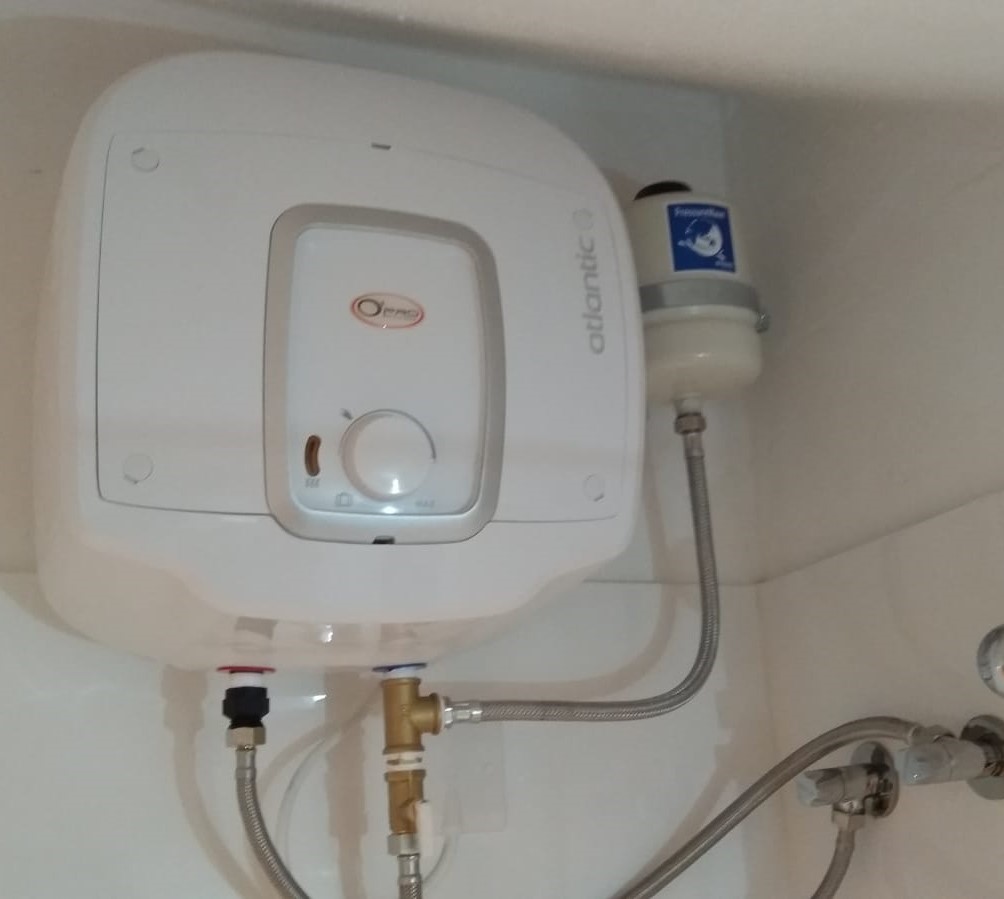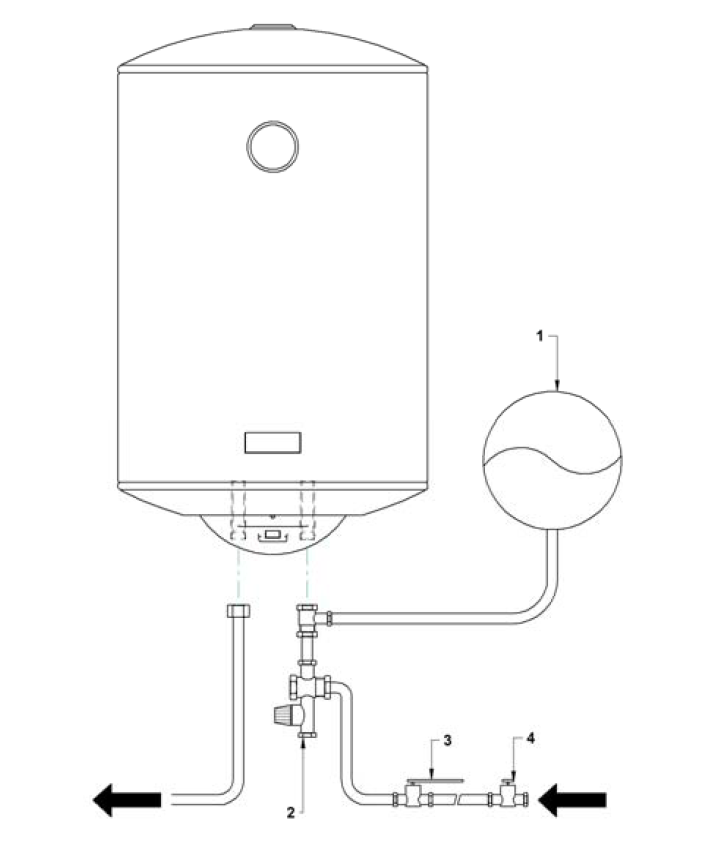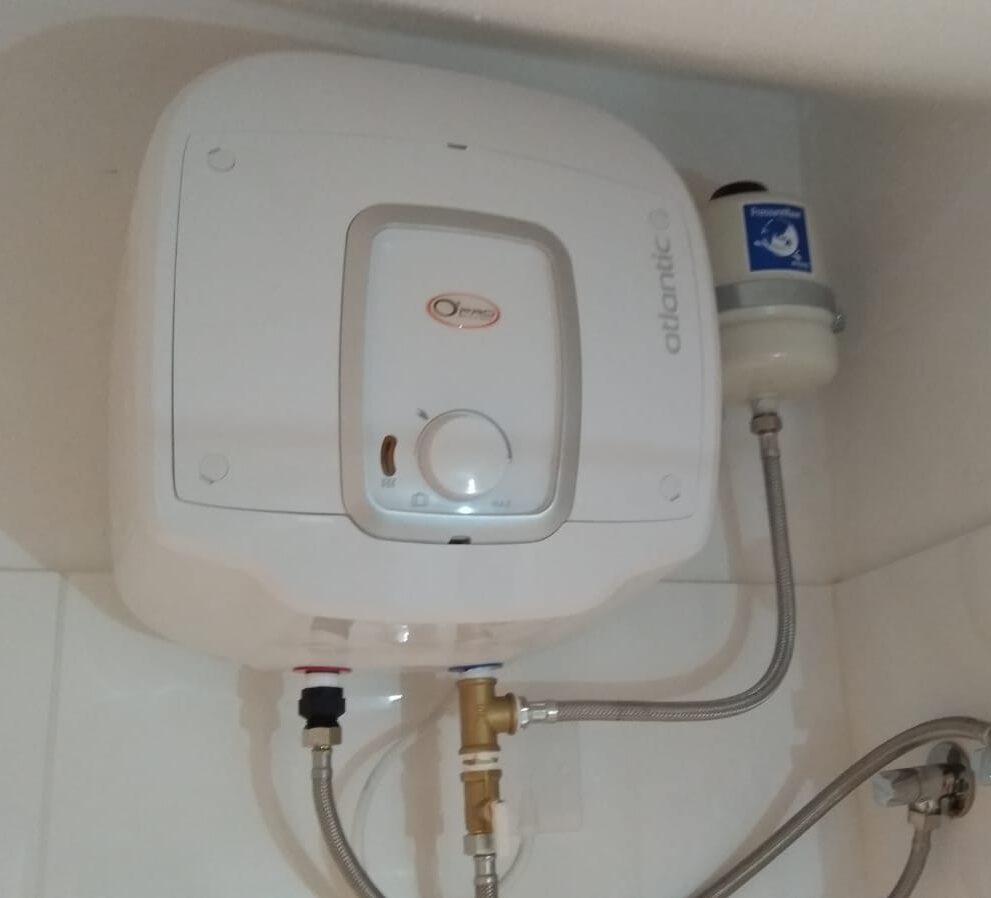Leaking water heaters have become more common in recent years.
The introduction of energy efficient water heaters brought with it the leaking of the safety valve spout within the body of the non-return valve on the cold side of the water heater. Without entering into much detail, this happens because the empty part of the tank has shrunk and there is not enough room for the thermal expansion of the water, so the pressure rises and water starts dripping from the spout in the safety valve.

This is happening even without a pump increasing pressure within the system, but with a pump this will happen more often. If your current water heater is not equipped with an expansion tank, the addition of a water heater expansion tank can benefit your system. High pressure in a water heater can lead to problems such as leaks, ruptures, and corrosion within your system, all of which can be expensive to fix. While a water heater expansion tank is an added cost, it can save you money in the long run by preventing these problems while the unit itself will last much longer.
Here’s a diagram and an example of how you can install an expansion tank to the cold inlet side of the water heater. Kindly note that a tee must be installed between the safety/non-return valve and the cold water inlet of the water heater.


Sizing of the tank can depend on the system pressure and also the max temperature setting of the water heater, but the 10% rule is adequate for most cases. Our range of expansion tank pressure vessels can be viewed here.
….
2lt expansion tank for 10-20lt (small size)
4lt expansion tank for 50lt (medium size)
8lt expansion tank for 80lt (large size)
